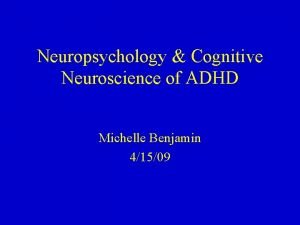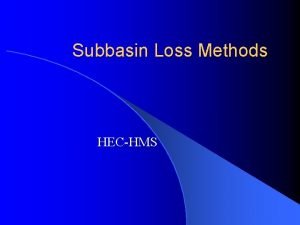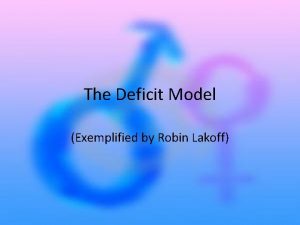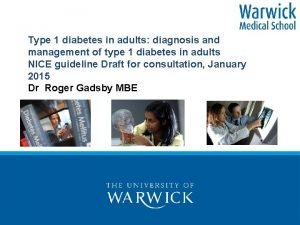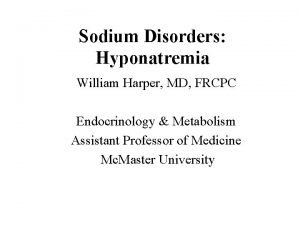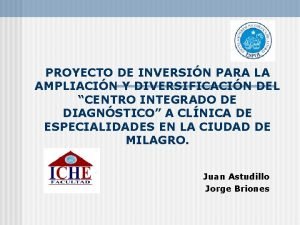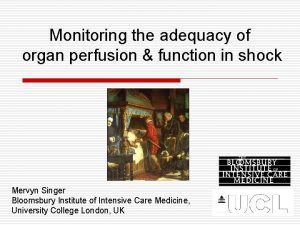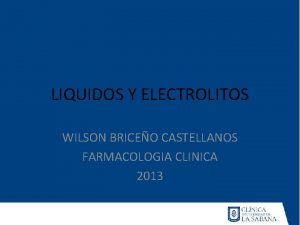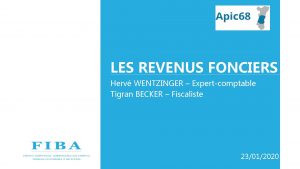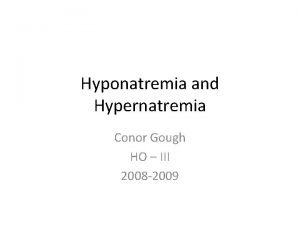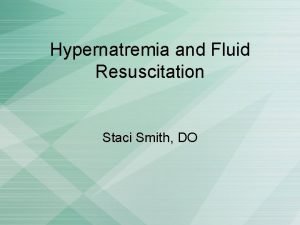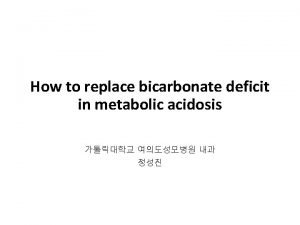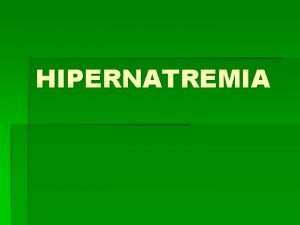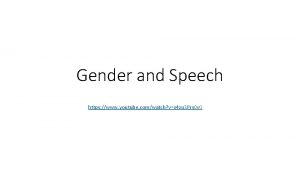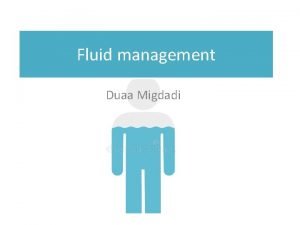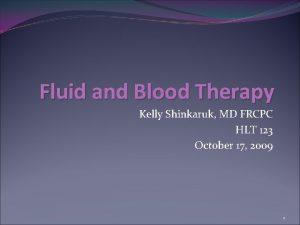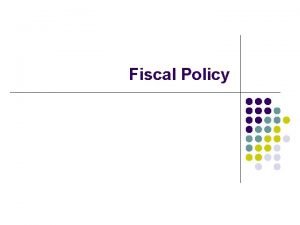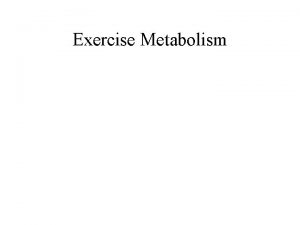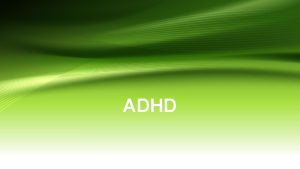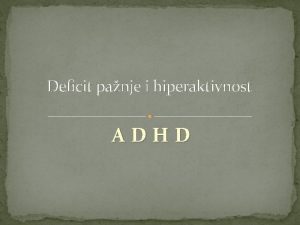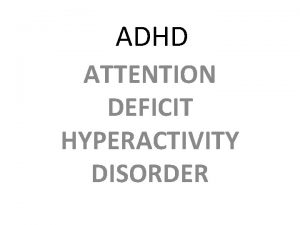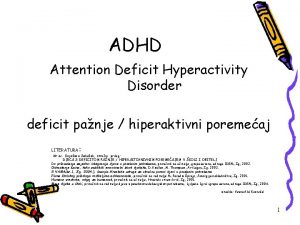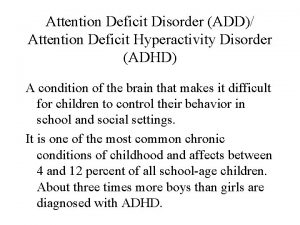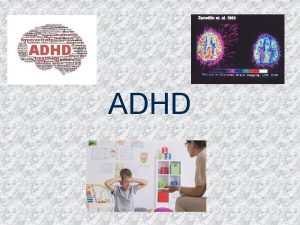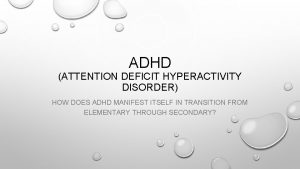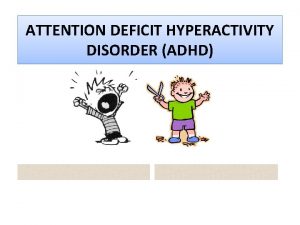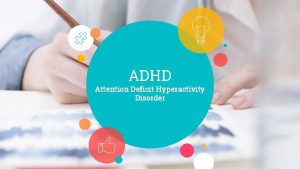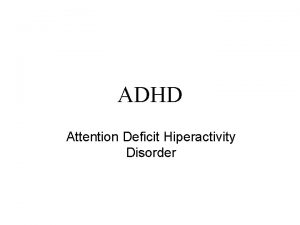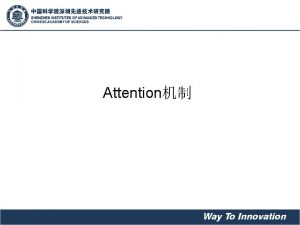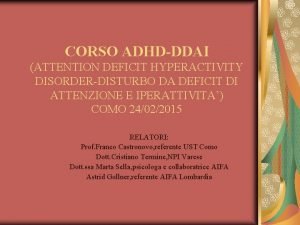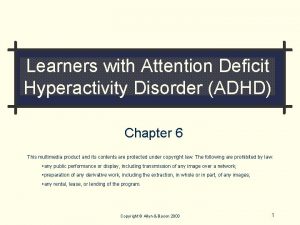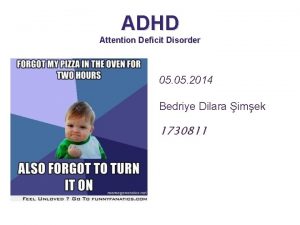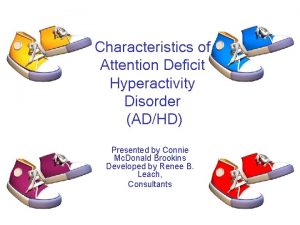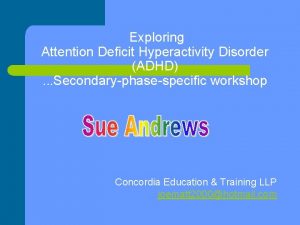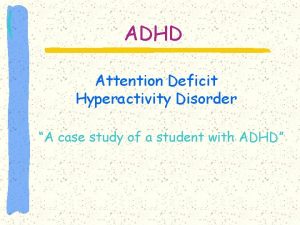Diagnosis and Management of ADHD ADHD Attention deficit

























- Slides: 25

Diagnosis and Management of ADHD

ADHD “Attention deficit hyperactivity disorder (ADHD) is a pattern of behaviour which is the most recent in a series of American attempts to characterise inattentive restlessness as a condition. It is effectively a syndrome encompassing hyperactivity, poor concentration and marked impulsive, impatient, excitable behaviour. Most, but not all, instances are predominantly genetic in origin, with various inherited deficiencies of the dopamine neurotransmitter system. ” Hill, P. Child & Adolescent Mental Health in Primary Care 2003; 1(1): 2 -4

Symptoms of ADHD Inattention Hyperactivity Impulsivity

ADHD: Prevalence and Demographics n Overall prevalence 3% to 10% in school-aged children n Diagnosed in boys 3 to 4 times more often than in girls n Persists in 30% to 50% of patients into adolescence and adulthood (symptom profile may change)

Neurochemical Pathophysiology of ADHD Noradrenaline Dopamine Nerve Impulse Transporter Synapse Receptors

Impact of ADHD on Patients and Family n Patients n n n Poor academic achievement Social impairment Low occupational status Increased risk of substance abuse Increased risk of injury n Family n n Increased stress levels Increased depression Increased marital discord Changed work status

Impact of ADHD on School Performance n Poor classroom behaviour n Poor academic achievement n Special education requirements (tutoring and special educational programmes) n School exclusion (either suspension or expulsion) n Repetition of grades n Failure to gain external qualifications

Effects of ADHD on Behavioural Development n Problems with productivity and motivation n Reduced ability to express ideas and emotions n Decreased working memory n Problems with social interaction n Impairments in speech n Problems with verbal reasoning

Developmental Impact of ADHD Behavioural disturbance Academic problems Difficulty with social interactions Self-esteem issues Legal issues, smoking and injury Pre-school Adolescent School-age Behavioural disturbance Academic problems Difficulty with social interactions Self-esteem issues Occupational failure Self-esteem issues Relationship problems Injury/accidents Substance abuse Adult College-age Academic failure Occupational difficulties Self-esteem issues Substance abuse Injury/accidents

Defining Comorbidity n ADHD is highly comorbid n Comorbidity is defined as two different diagnoses present in an individual patient n It is important to recognise comorbid disorders n Comorbidities may require treatment independent from and different to therapy for ADHD

Co-occurring Disorders in Children (n = 579) ADHD alone 31% Tics 11% Conduct Disorder 14% Mood Disorders 4% Oppositional Defiant Disorder 40% Anxiety Disorder 34% MTA Cooperative Group. Arch Gen Psychiatry 1999; 56: 1088– 1096

Common Associated Comorbidities 60 40 (%) 20 0 Oppositional Anxiety Learning defiant disorder Mood Conduct Smoking Substance disorder use disorder Milberger et al. Am J Psychiatry 1995; 152: 1793– 1799 Biederman et al. J Am Acad Child Adolesc Psychiatry 1997; 36: 21– 29 Castellanos. Arch Gen Psychiatry 1999; 56: 337– 338 Goldman et al. JAMA 1998; 279: 1100– 1107 Szatmari et al. J Child Psychol Psychiatry 1989; 30: 219– 230 Tics

Input Needed to Make a Diagnosis Teacher Diagnosis Child Parent

Symptom Groups Inattention Hyperactivity Impulsivity Does not attend Fidgets Talks excessively † Fails to finish tasks Leaves seat in class Blurts out answers Can’t organise Runs/climbs excessively Cannot await turn Avoids sustained effort Loses things, ‘forgetful’ Easily distracted Cannot play/work quietly Interrupts others Intrudes on others Always ‘on the go’ Talks excessively * * ‘Talks excessively’ is one of the DSM-IV criteria for hyperactivity but not one of the ICD-10 criteria † ‘Talks excessively’ is one of the ICD-10 criteria for impulsiveness but not one of the DSM-IV criteria DSM-IV – Diagnostic and Statistical Manual, 4 th Edition (American Psychiatric Association, 1994) ICD-10 – International Classification of Diseases, 10 th Edition (World Health Organisation, 1993)

DSM-IV ADHD Diagnostic Criteria n n n List of symptoms must be present for past 6 months Must have six (or more) symptoms of inattention and/or hyperactivity–impulsivity Some symptoms present before 7 years of age Some impairment from symptoms must be present in two or more settings (e. g. school and home) Significant impairment: social, academic or occupational Exclude other mental disorders

DSM-IV Subtypes of ADHD n Predominantly inattentive n Predominantly hyperactive–impulsive n Mixed/combined n In partial remission n Not otherwise specified (NOS)

ICD-10 HKD Diagnostic Criteria n n n Used to diagnose hyperkinetic disorder (HKD), a more severe form of ADHD List of symptoms must be present for at least six months Must have: at least six symptoms of inattention AND at least three symptoms of hyperactivity AND symptom of impulsivity at least one Onset of symptoms no later than 7 years of age Impairment of symptoms must be present in two or more settings (e. g. school and home) Significant impairment: social, academic or occupational

Important Rating Tools for ADHD n n n Conners Parent Rating Scale – assesses and monitors response to treatment IOWA Conners – measures dimensions of behaviour associated with ADHD SKAMP Measures – measures the classroom manifestation of ADHD SNAP-IV Scale – derived from descriptions in DSM-IV Continuous Performance Test (CPT) – measures the attention span in children with ADHD C-DISC – computer-assisted diagnostic interview schedule for children

Therapy Options as Part of a Total Treatment Programme n Behavioural treatment n Medication management n Combining medication/behavioural treatment n Educating parents/patient about ADHD n Educational support services

Tools Used in Behavioural Treatment n Specific strategies n n n Reward system Time out Social reinforcement Behaviour modelling n n n Group problem-solving Sports skills Social skills training Support for parents Family and patient education Cunningham, Barkley. Child Dev 1979; 50: 217– 224

Behavioural Treatment in the Home n Identify problem situations and the precipitating factors n Enhance positive parent–child interactions n Limit negative parent–child interactions n Use cost systems to reduce problem behaviours n Use time outs as punishment for serious problem behaviours

Behavioural Treatment in the Classroom n n n Behavioural treatment in school setting similar to the approach used in home with parents Goal: Reduce inattention and disruptive behaviour Specific school accommodations: n n Ensure structure and predictable routines Employ cost–response token economy systems Use daily report cards Teach organisational and work/study skills Atkins, Pelham. 1992: 69– 88; Barkley, Cunningham. Arch Gen Psychiatry 1979; 36: 201– 208

Effectiveness of Behavioural Therapy n n Parent training is generally regarded as the most effective behavioural therapy Parent training combined with medication management increases parent acceptability of medication School-based treatment is more effective than individual strategies, however benefits are only seen during treatment programmes Individual treatment approaches have not been shown to be effective

Pharmacological Agents Used in Treatment of ADHD* Stimulants Methylphenidate Amphetamine compounds Dextroamphetamine Pemoline Antidepressants Tricyclic antidepressants Bupropion Antihypertensives Clonidine Guanfacine (Recommended first-line therapy) * Not all agents are available in some countries Wilens T, et al. ADHD, In Annual Review of Medicine, 2002: 53 Greenhill L. Childhood attention deficit hyperactivity disorder: pharmacological treatments. In: Nathan PE, Gorman J, eds. Treatments that Work. Philadelphia, PA: Saunders; 1998: 42 -64

ADHD Pharmacotherapy – Responsiveness Methylphenidate Amphetamine Pemoline Tricyclic antidepressants Bupropion MAOI Clonidine/ Guanfacine 0 20 40 60 % Responders 80 Wilens TE, Spencer TJ. Presented at Massachusetts General Hospital’s Child and Adolescent Psychopharmacology Meeting, March 10 -12, 2000, Boston, MA 100
 Actual nursing diagnosis
Actual nursing diagnosis Medical diagnosis and nursing diagnosis difference
Medical diagnosis and nursing diagnosis difference Second phase of nursing process
Second phase of nursing process Nursing process and critical thinking
Nursing process and critical thinking Alternating attention vs divided attention
Alternating attention vs divided attention Perbedaan diagnosis gizi dan diagnosis medis
Perbedaan diagnosis gizi dan diagnosis medis Deficit and constant loss method
Deficit and constant loss method Deficit theory lakoff
Deficit theory lakoff Type 1 diabetes in adults diagnosis and management
Type 1 diabetes in adults diagnosis and management Siadh vs di
Siadh vs di Balance de equipos
Balance de equipos Base deficit
Base deficit Base deficit
Base deficit Corrección de sodio
Corrección de sodio Déficit imputable sur les revenus fonciers 4bb
Déficit imputable sur les revenus fonciers 4bb Sodium correction formula
Sodium correction formula Sodium deficit
Sodium deficit Correction of bicarbonate deficit
Correction of bicarbonate deficit Metodo de deficit acumulado
Metodo de deficit acumulado Causas de hipernatremia
Causas de hipernatremia Pamela fishman gender theory
Pamela fishman gender theory Metodo de deficit acumulado
Metodo de deficit acumulado Fluid deficit calculation
Fluid deficit calculation Fluid deficit calculation
Fluid deficit calculation What is fiscal deficit
What is fiscal deficit Oxygen deficit trained vs untrained
Oxygen deficit trained vs untrained




